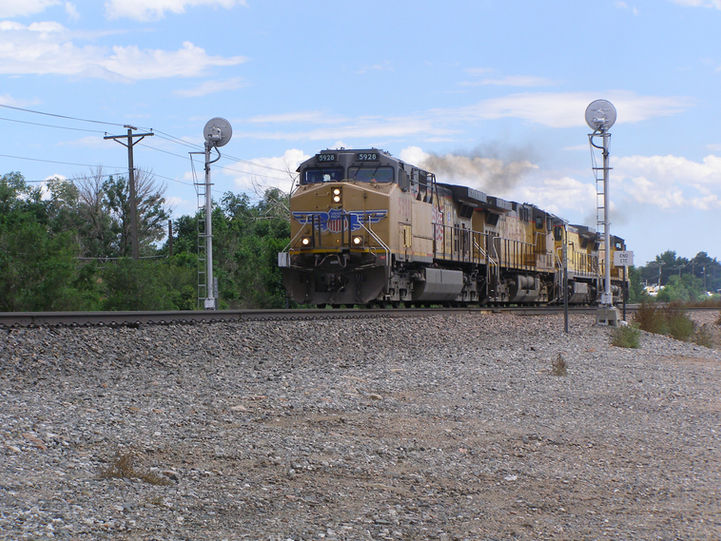The upper level of my two-level layout is all narrow gauge, depicting a portion of the former Denver & Rio Grande Western’s Fourth Division line in southwestern Colorado and northern New Mexico.
Colorado's Joint Line
One of my favorite railfanning locations is Colorado’s Joint Line – the busy and mostly double-tracked line from Denver to Bragdon, on the outskirts of Pueblo, CO. The line nowadays features mostly Burlington Northern Santa Fe trains (coal and merchandise) and some Union Pacific freights. My favorite spots are the “pinch points” – where the double track shrinks to single track just north and south of Colorado Springs – at Palmer Lake and Crews (Fountain), respectively. Here the trains tend to bunch up and provide great railfanning. These photos were taken in 2017 and 2014.
Go to the bottom of the page for additional information.
Click on the image for details.
These images at Palmer Lake were taken on September 4, 2017, while railfanning with John Scherr. In a period of 4 and a half hours, we saw 8 trains – the definition of a Good Day.
The Joint Line has an interesting history, starting in the 1870s when the Denver & Rio Grande built south from Denver to Colorado Springs and beyond, with the hope of reaching El Paso and eventually Mexico City. Shortly thereafter, the Atchison, Topeka and Santa Fe RR built a roughly parallel track through the same towns to Denver from La Junta and Pueblo, and this was later followed by the Denver and New Orleans RR (a predecessor to the Colorado & Southern Ry). Over the years, the D&NO tracks were pulled up, leaving the D&RG and AT&SF/C&S to compete against each other. During World War I, the USRA ordered the two railroads to operate between Denver and Bragdon as a double track railroad, hence the name “Joint Line”, and some connecting tracks and crossovers were constructed to facilitate the operations. In the mid-1970s, when traffic had slowed, the Santa Fe line through Colorado Springs was abandoned with incentives from the city to eliminate some “street running”. As a result, the stretch between Palmer Lake and Crews (Fountain) is now single track. When rail traffic increased in the 80s and 90s, especially with coal traffic from the Powder River basin in Wyoming, this single track became a bottleneck for trains, and a great place for railfans.
Palmer Lake (elev. 7225’), north of Colorado Springs, is the highest point on the Joint Line, 2,000’ above Denver. The ruling grade for southbound traffic is 1.4% - steep enough to require helper engines. Until the recent use of distributed power units (DPUs), most southbound freights cut off their rear helpers here and ran light back toward Denver, so there was lots of activity here. The other end of single track at Crews also has activity, but no helpers were generally used on this end of the Joint Line.














